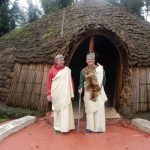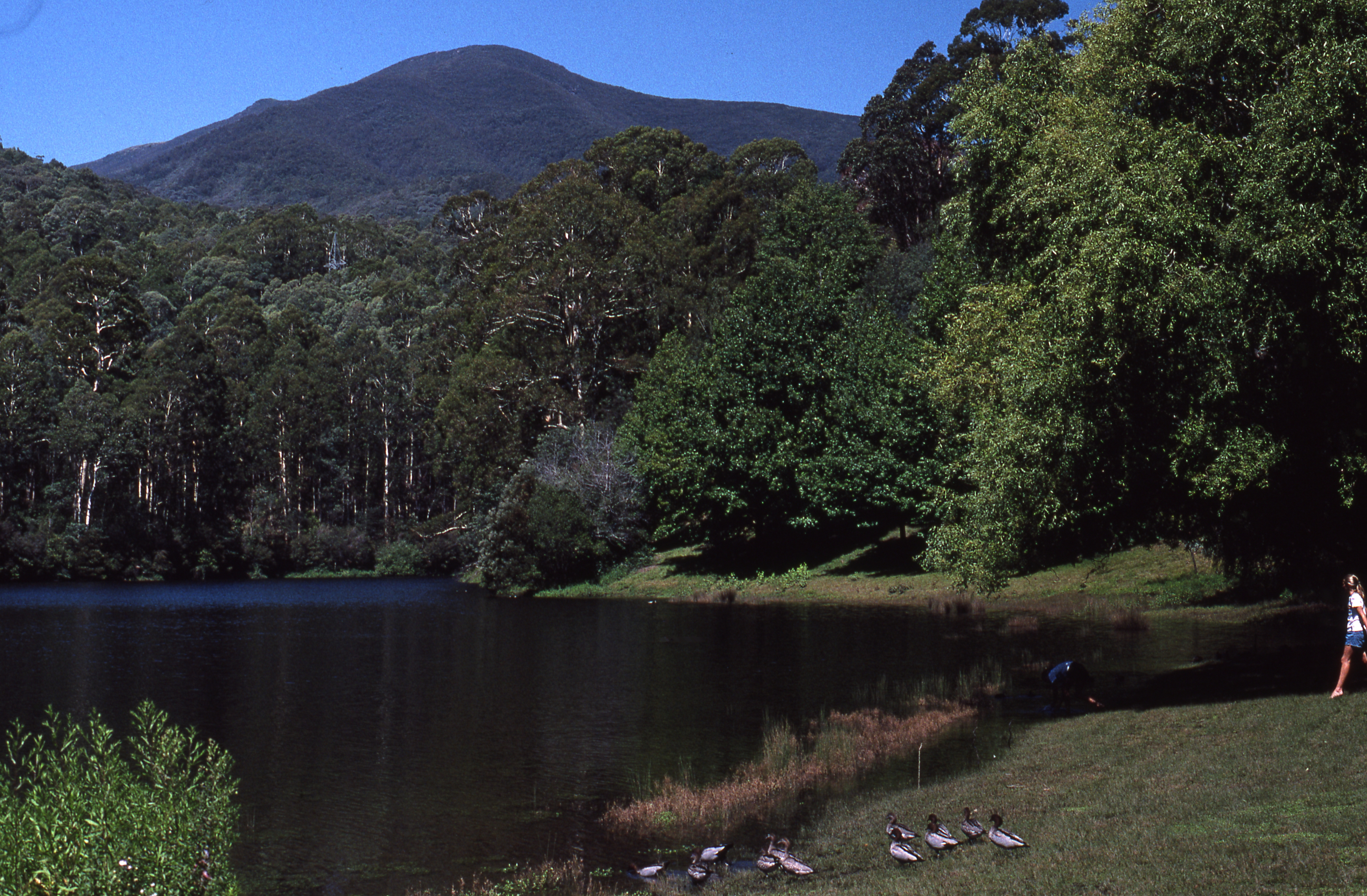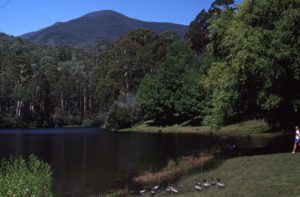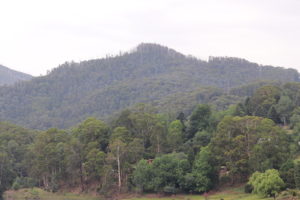A recent visit to the Victorian High Country yielded a most interesting and unexpected surprise! While walking around Lake Guy near Bogong Village I came across a sign which read “Spion Kopje”, with an arrow pointing to a mountain in the distance. It was not the most striking mountain in the area – but a name like that immediately grabbed my attention.
Apart from being the site of the battle during the Anglo-Boer War, where the British, together with Australian colonial troops within their ranks, suffered a defeat, the name appears in many states and cities within Australia and – no doubt – in other countries that once formed part of the British Empire.
Obviously the battle made a great impression and lived on in the psyche of returning soldiers – a defeat at the hands of the Boers!
But my main interest, stimulated by seeing the name in such an unexpected place, was that I knew that my great grandfather Gerrit Willem Smit (Gerrit) and my grandfather Christiaan Hendrik Smit (Chris) were members of the Bethal Commando, and may have been involved in military action at Spioen Kop and Tugela Heights and definitely at the siege of Ladysmith – according to the Standerton concentration camp records which I have for Gerrit and Chris.
Gerrit was captured at Bergendal – the records show Machadodorp on 14th September 1900- so I am assuming Bergendal, as I cannot find any reference to skirmishes within the town itself. Chris was captured at Vlakplaats much later in the war on the 23rd March 1902.
Research into the activities of the Bethal Commando indicate that the Commando was led by Commandant H.F. Grobler; with an initial strength of 737. The Commando was involved in the following battles/skirmishes:
- Sandspruit,
- Talana,
- Ladysmith,
- Hlangwane,
- Donkerhoek, in South Eastern Transvaal, and
- Bergendal.
Unfortunately I will never know whether Gerrit and Chris were involved in all these battles – the only information that I have is that Gerrit was at Ladysmith and captured at Machadodorp. All family members that could or would have known have long since passed on and I was only 9 or 10 when my grandfather Chris passed away.
It is possible that Gerrit and Chris were involved in the Battle of the Tugela Heights (14–27 February 1900). This battle is well documented. Initially the British took the hills of Monte Cristo, some five kilometers to the west of Colenso, outflanking the Boers on Hlangwane hill. The Boers, under heavy bombardment abandoned Hlangwane and withdrew north of the Tugela. On 21 February a pontoon bridge was built which enabled the British to take Railway Hill and Wynnes Hill. They moved the pontoon bridge downstream to the mouth of the Tugela gorge where they crossed the river unseen and outflanked the Boer positions. On 27 February the British took Pieters and Harts Hills, after which the Boer resistance crumbled.
Spion Kopje – Australian sources say that the name seems to have come from that South African peak from which the Boers first saw the promised fields of Natal and that it later became the centerpiece in a battle where the Boers beat the British.
Here in Melbourne in the railway yards, there was a little hill called Spion Kop. Lloyd Holmes, in his book “A Railway Life”, refers to Spion Kop. Apparently it was on a hill and exposed to winds from every direction. There was at least one hut there used apparently by shunters and train examiners, and everyone was waiting for the hut to be blown away. In winter, it would freeze the medals off a brass general, and in summer you could fry an egg in your hat. The late Norm de Pomeroy also reckoned the place was not fit for man or beast.
Spion Kopje became terminology in railway talk! It was an old signal box between Kensington and North Melbourne, and the flying tracks for the North East Goods line is what the men of the Victorian Railway were referring to when the term Spion Kop was used.
An Irish Spion Kop horse! This was a “strong, handsome bay horse with a white blaze and four white socks, bred by his owner Major Giles Loder who had inherited the Eyrefield Stud near Caragh in County Kildare from his uncle Eustace “Lucky” Loder He was named after the Battle of Spion Kop (1900). Spion Kop’s sire Spearmint had been Eustace Loder’s most successful horse winning the Derby and the Grand Prix de Paris in 1906. At stud, he was fairly successful, siring Royal Lancer (St Leger), Zionist (Irish Derby) and Plucky Liege. Hammerkop, Spion Kop’s dam was a top-class staying racehorse who won the Yorkshire Oaks in 1903 and the Cesarewitch Handicap in 1905, but produced no other winners in a long stud career.
Here again is the Aussie Spion Kopje – from my camera.



